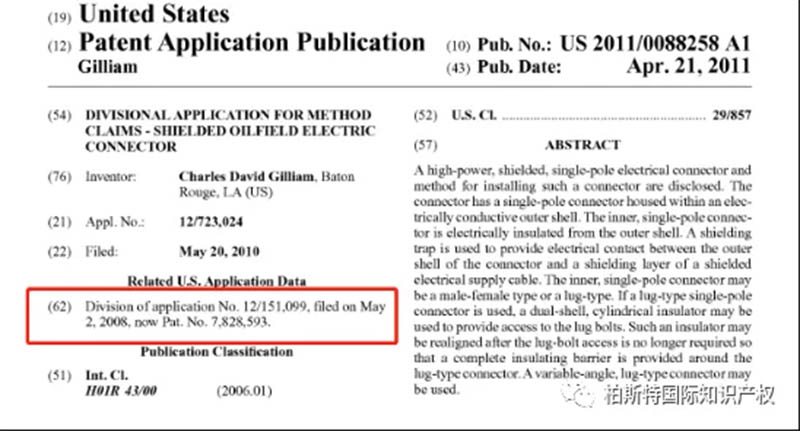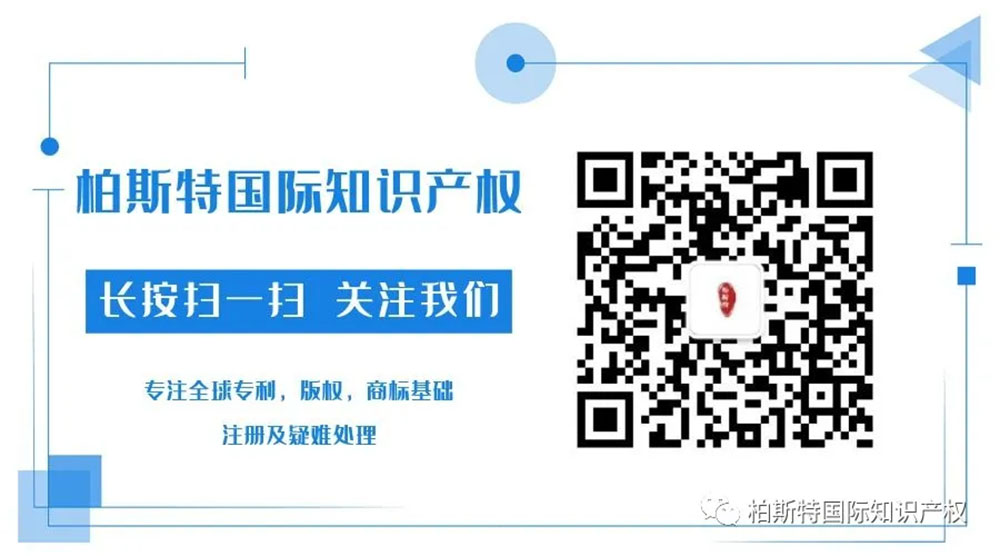- Knowledge
One Picture Understanding Series
Division, Continuation, and Partial Continuation in US Patent Applications

Regarding the Division of Patent Applications in the United States
Continuation and Partial Continuation Analysis Report
With the increasing emphasis on intellectual property protection, "patent first" in market layout has become a consensus among many enterprises. As a target market for many "going global" enterprises, the United States is one of the main countries for companies to apply for overseas patents. Strengthening understanding of the US patent application system can help Chinese companies better plan their patent application strategies. The patent application system in the United States is different from that in China, with the most obvious difference being the subsequent application system. According to the patent system in the United States, after submitting a patent application (not a provisional application), it can be used as the parent case (Basic Application) to file subsequent applications. Common types of subsequent applications include divisional applications, continuation applications, and continuation in part applications. This article will introduce the three subsequent applications from the perspectives of applicability, submission timing, application date, and patent protection period.
divisional application
(1) Applicable situation
The United States Patent Law 35 USC 121 provides for divisional applications. If an examiner determines that an application contains two or more independent or significantly different inventions, the examiner may request that the application be limited to one of the inventions, and the remaining invention subject matter may be submitted as a divisional application. This is similar to the requirement in China's patent law for the unity of the scope of protection of rights in the same application. According to the US Patent Examination Procedure Manual MPEP 802.01, an independent invention refers to two or more inventions that are not related in design, operation, or effect to be protected. For example, a process and the devices that can implement it are two completely independent inventions. Significant differences refer to the fact that if two inventions are not related in design, operation, or effect, and at least one invention has patentability (novelty and non obviousness) relative to the other inventions, then the two inventions can be considered significantly different.
In practice, a divisional application in the United States is usually the result of the examiner issuing a restriction requirement on the original application. In the process of examining a patent application, if the examiner believes that the claims of the patent application contain more than one invention, they will issue a notice of limitation to the applicant, requesting the applicant to limit the claims of the patent application to only one invention. For claims that have been deleted or withdrawn from the original application (i.e. the parent application), the applicant may file a divisional application. From the perspective of examination, the divisional application has been determined to be different from the parent invention, so in general, it can avoid double patenting rejection based on the parent invention, which is an examination advantage that continuation and partial continuation applications do not have. Of course, if the scope of protection overlaps due to modifications to the claims during the divisional or parent case review process, there is also a possibility of receiving duplicate authorization rejection.

Figure 1 Example of divisional application
(2) Submission timing
As mentioned earlier, a divisional application is usually the result of the examiner's restriction request on the original application, and its submission time is after the parent case is filed, before the parent case is authorized/abandoned/the application process ends.
(3) Instructions and Claims
The content of the divisional application cannot exceed the scope of disclosure of the parent case. In practice, the specification of the divisional application is generally not rewritten, and the original specification is usually submitted or some irrelevant paragraphs are deleted before submission. The claims of a divisional application are the invention points separated from the parent case, usually the claims recorded in the original claims or newly added claims based on the content recorded in the specification.
(4) Application date and patent protection period
The divisional application enjoys the same filing date as the parent case, and the starting date of the patent protection period is also the same as the parent case. In some cases, such as when enjoying a patent term extension for a divisional case, the protection period of the divisional case may exceed that of the parent case.
(5) Inventor
Usually, the initial inventor of the divisional application is also the same as or a part of the inventors in the parent case.
Continuation application
(1) Applicable situation
According to the US Patent Examination Procedure Manual M P. The explanation of E.P.201.07 is that a continuation application is based on one or more inventions disclosed in the pending parent application, and the continuation application cannot add subject matter that is not disclosed in the parent application. That is to say, a continuation application usually refers to a continuation application based on the parent case that has already been submitted. The applicant does not emphasize that the invention corresponding to the claims of the continuation and the parent case is different, which is fundamentally different from the aforementioned divisional application.
In practice, the applicant is more flexible in applying for a continuation application. For example, if the applicant finds that the protection scope of the claims in the parent application is too small, fails to cover new products or competitor products, they can modify the claims based on the scope disclosed in the parent application specification, and obtain a larger protection scope through the continuation application, thereby maintaining a competitive advantage in the market.

Figure 2 Example of Continuation Application
(2) Submission timing
The timing for submitting a continuation application also needs to be when the parent case is in a pending state, that is, after the parent case is submitted and before it is authorized/abandoned/the application process is completed. In addition, in the continuation application and other subsequent applications, the applicant may submit subsequent applications based on the first original application, or may submit further subsequent applications based on subsequent applications of the original application. As long as one of the applications derived from the same original application is still pending, the applicant can continue to submit subsequent applications.
(3) Instructions and Claims
The content of the renewal application cannot exceed the disclosure scope of the parent case. In practice, the specification of the renewal application is basically not rewritten. It is usually possible to rewrite the specification without exceeding the disclosure scope of the parent case when the parent case is not well written. The claims of the continuation application can overlap with the parent case, or they can be technical solutions that have not appeared in the claims of the parent case but are only disclosed in the specification.
(4) Application date and patent protection period
Similar to the divisional application, the filing date of the continuation application is the same as that of the parent application, and the starting date of the patent protection period is also the same as that of the parent application.
(5) Inventor
The inventor of the continuation application must be the same as or a part of the inventor in the parent case.
Partial Continuation Application
(1) Applicable situation
According to the US Patent Examination Procedure Manual MPEP 201.08, a partial continuation application is an application submitted within the life cycle of the parent application, which repeats some or all of the substantive content of the parent application, and adds content that is not disclosed in the parent application. That is to say, some continuation applications allow applicants to add new subject matter that has not been publicly disclosed in the parent application on the basis of the parent application, which is significantly different from divisional applications and continuation applications.
In contrast, some continuation applications have greater uncertainty, for example, applicants can submit new invention topics through partial continuation applications as product iterations and technological updates occur. This uncertainty undoubtedly has a greater deterrent effect on competitors. However, it should be noted that some of the newly added invention themes in the continuation application cannot enjoy the same filing date as the parent application. Moreover, as the examination reference date for the claims containing newly added invention content in some continuation applications is based on the date of the new application, it is best to file some continuation applications before the parent case is published. If the application is filed after the parent case is published, the parent case or its family may become existing technical literature and be used to reject the patentability of the new claims in some continuation applications.

Figure 3 Example of Continuation Application
(2) Submission timing
As mentioned earlier, according to MPEP 201.08, partial continuation applications can be submitted before the parent application is authorized, waived, or the application process is terminated.
(3) Instructions and Claims
Some continuation applications contain new content, which is also their most obvious feature. Therefore, the content recorded in the description of some continuation applications can exceed the scope of disclosure of the parent application. Correspondingly, some of the claims in the continuation application may add new invention points that were not disclosed in the parent case.
(4) Application date and patent protection period
There is a significant difference between divisional applications and continuation applications. Some continuation applications do not necessarily have the same filing date as the parent application. The same content as the parent application can have the same filing date as the parent application, while new content will have a new filing date. According to MPEP 201.08, in order for partial continuation applications to enjoy the priority of the parent case, certain conditions must be met: 1) the inventors of the parent case and the partial continuation application are the same, or at least one co inventor; 2) Partial renewal applications shall be submitted before the authorization, waiver or termination of the application process of the parent case; 3) Partial continuation applications contain or have been modified to include specific references to the parent case. It is worth noting that although the newly added content does not enjoy the priority of the parent case, the patent validity period of some continuation applications is calculated from the date of the parent case application, which means that in fact, the patent protection period of some continuation applications is "shortened".
(5) Inventor
Unlike divisional applications and continuation applications, the inventors of some continuation applications may be a part or all of the inventors in the parent application, or may further include new inventors.
In summary, each of the three subsequent applications in the United States has its own characteristics (see Table 1 for details). In practical work, applicants can refer to factors such as market layout strategy, technological research and development progress, and the status of the parent application to choose the appropriate subsequent application method to achieve the best patent protection effect.

Table 1 Comparison of Three Subsequent Applications
THE END

Some of the materials in the article are sourced from the internet. If there is any infringement or any questions about copyright, please contact: monica@yfzcip.com We will handle it promptly!




